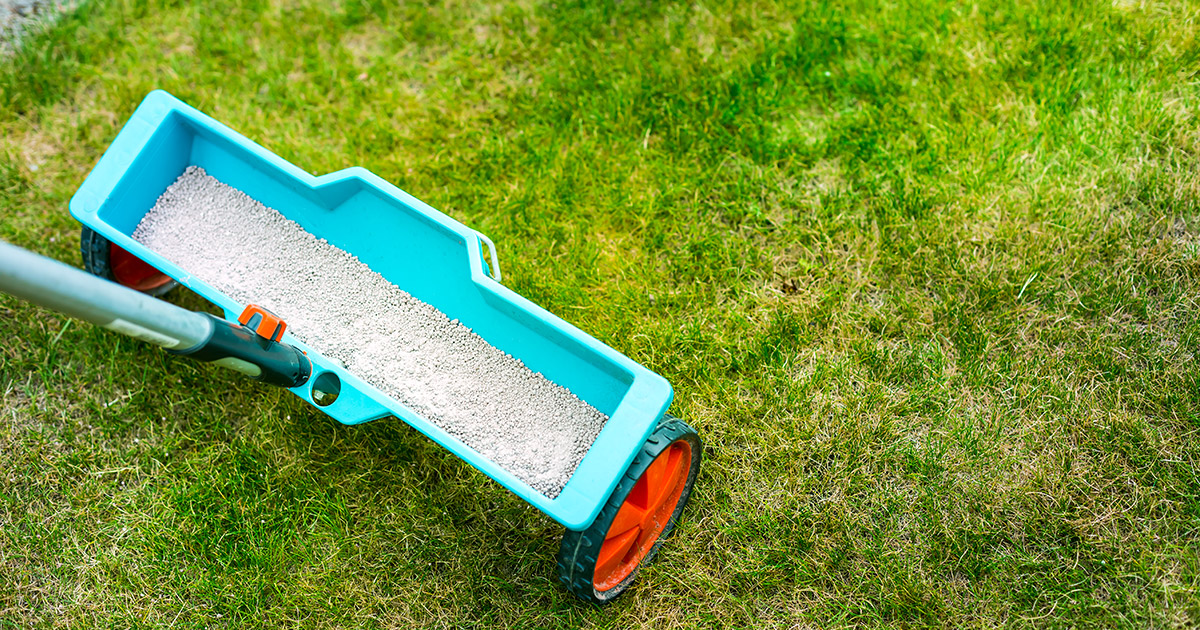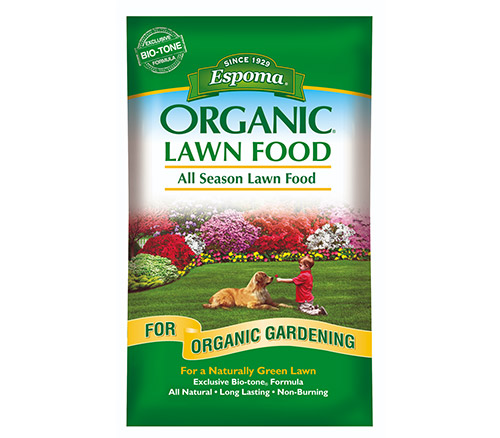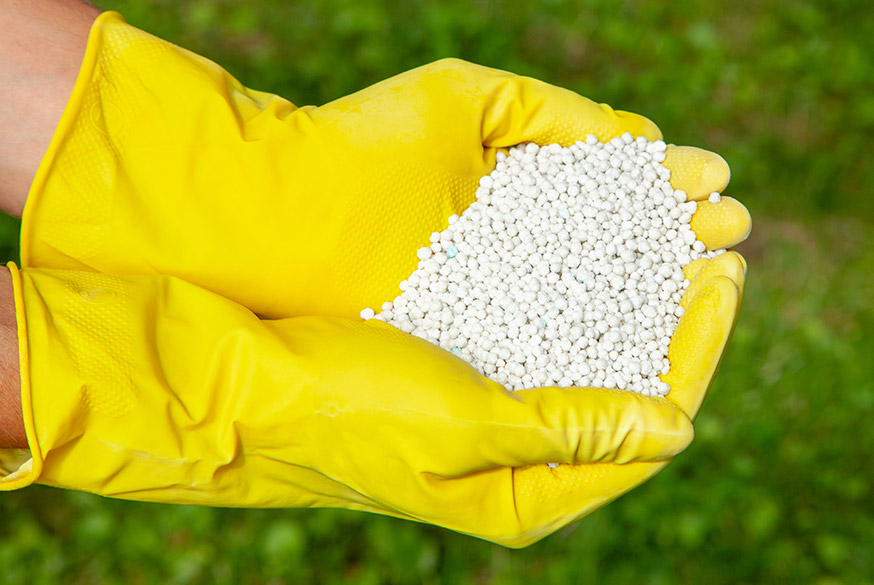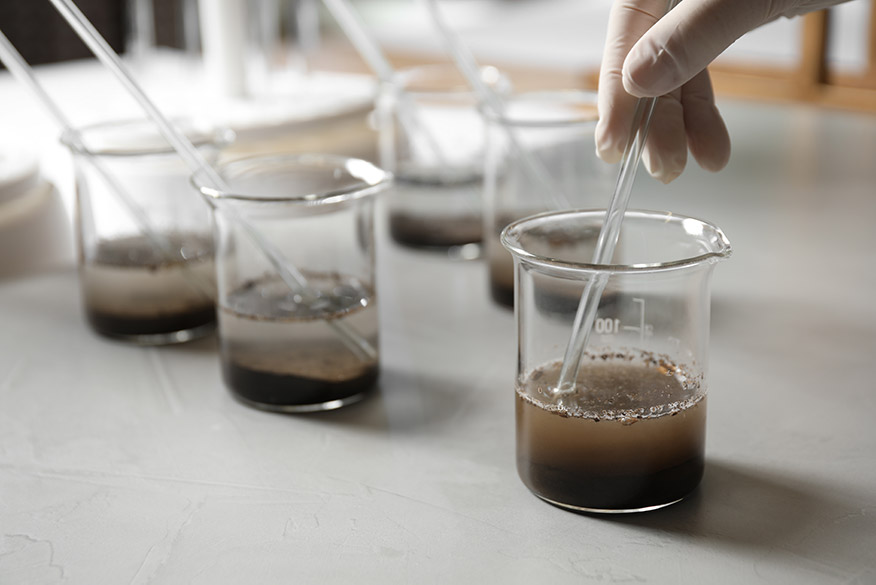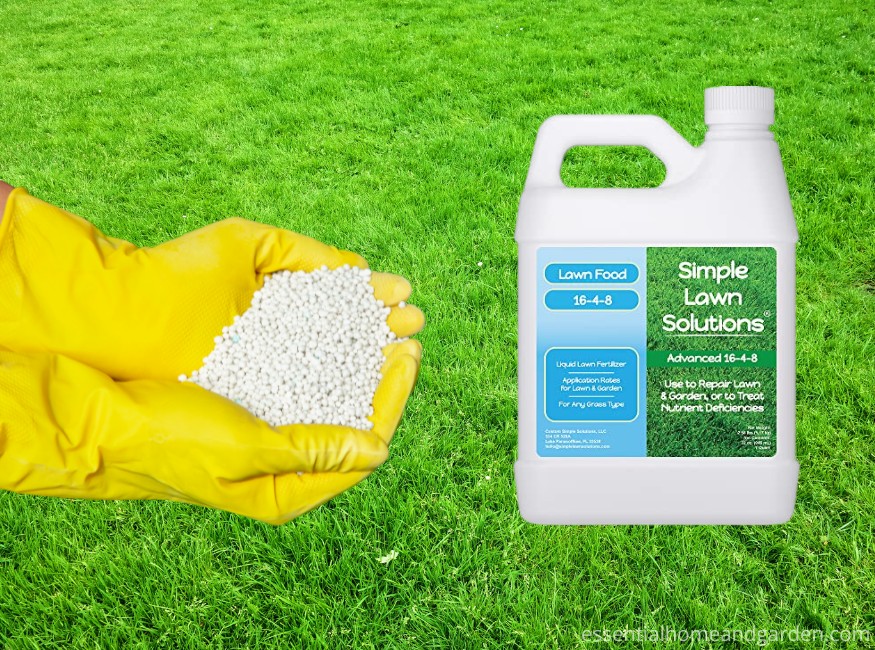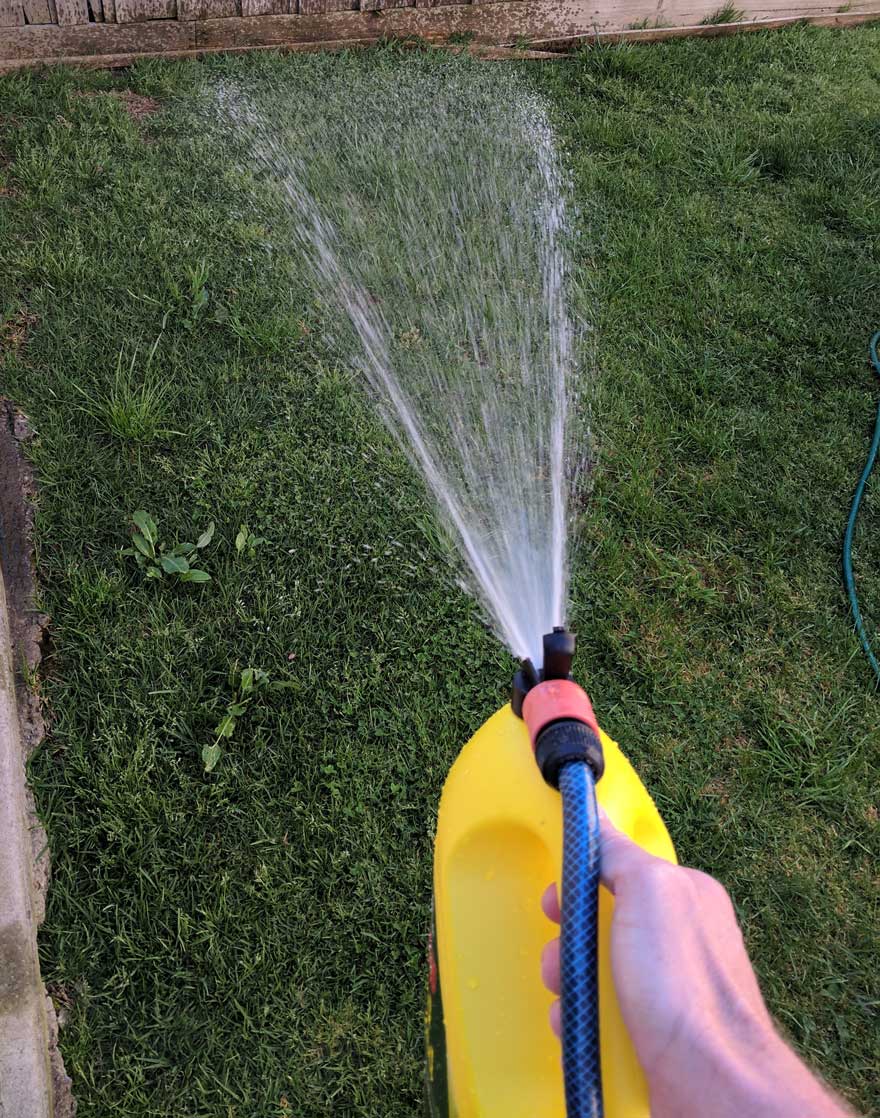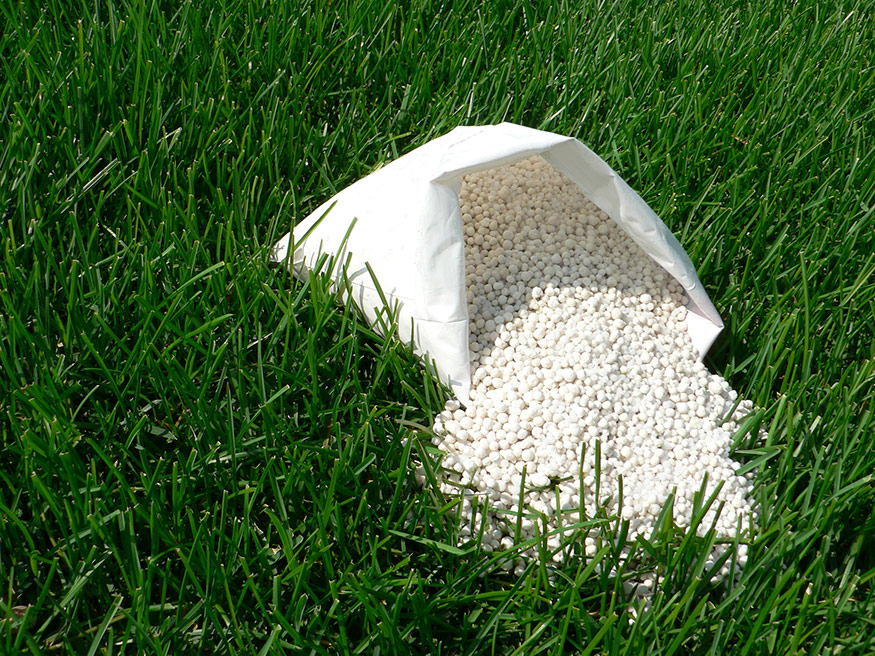Fertilizing your lawn regularly is crucial for achieving lush, healthy grass. The right fertilizer, applied at the appropriate times, not only enhances grass color and density but also improves soil health, helping to prevent disease and weed problems. However, with so many fertilizer options available, selecting the best lawn fertilizer for your lawn can be challenging.
There are hundreds of brands and various forms of fertilizers, including granular, liquid, organic, and synthetic. Some offer fast-release nutrition for immediate results, while others provide slow-release nutrients over several months.
In this guide, I’ll use my 15 years of experience in making my lawn look great to help you navigate the world of lawn fertilizers. I’ll discuss the best products for different grass types and lawn conditions, as well as the benefits and drawbacks of each. Additionally, we’ll cover N-P-K ratios, application methods, and the best times and techniques for applying fertilizers to maximize their effectiveness.
[toc]
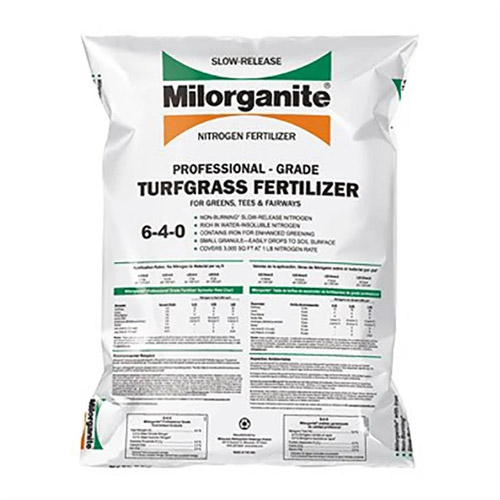
- Creates a thick, lush, and sustainable lawn
- Slow-release formula for lasting nutrition
- Safe for kids and pets
- Improves soil structure and supports beneficial microbe activity
- Repels deer and other pests

- High nitrogen content for rapid growth in all seasons
- Safe for pets and children; won’t burn lawn
- Suitable for any grass type and time of year
- Includes “Bio-tone” microbe mix for lasting results
- Doesn’t stain concrete
Best Overall Lawn Fertilizer: Milorganite
If you’re searching for the best organic lawn fertilizer or just the number-one overall fertilizer for general use, Milorganite is the one you want.
With plenty of nitrogen to support thick, lush growth and no unnecessary nutrients that might contribute to fertilizer runoff problems, it’s a great option for established lawns in need of ongoing maintenance.
Best of all, this organic product is made with natural, eco-friendly ingredients that are safe for your family and the planet. By supporting optimal soil conditions and microbe health, this product offers lasting results at an affordable price.
Milorganite Fertilizer 6 - 4 - 0 is the perfect solution for maintaining a healthy, lush lawn. Its slow-release, non-burning formula delivers essential nutrients, including nitrogen, phosphate, calcium, and iron, promoting overall lawn health.
This natural nitrogen fertilizer is safe for pets and can be applied to lawns, shrubs, trees, vegetables, and flowers. It lasts longer compared to other fertilizers, reducing the need for frequent applications.
Best Lawn Fertilizers by Category
We examined eight different categories of lawn fertilizers and chose the best product in each to review. No matter what type of grass you have or what it needs to thrive, you’ll find the best product to meet your needs right here.
If you’re looking for the best single fertilizer to use in the spring, summer, and fall, Espoma Organic All Season Lawn Food is your top choice. This organic fertilizer is specially formulated with a high nitrogen content to feed lush, rapid growth no matter the season.
With a 9-0-0 NPK ratio, it’s not suitable for new lawns or those with significant nutrient deficiencies. However, for most established lawns with healthy, nutrient-rich soil, this is a great choice.
I especially like that this slow-release formula is safe for pets and children and won’t burn your lawn. The nitrogen in this non-synthetic fertilizer comes from poultry manure and feather meal. The formula also includes Espoma’s “Bio-tone” microbe mix to help reinvigorate the soil for lasting results.
The gentle nature of this product means it can be used on any grass type and at any time of year. Even better, it doesn’t have a noticeable odor and won’t attract insects. And, unlike other organic granular fertilizers we tried, this one doesn’t stain concrete.
Compared to synthetic products, Espoma Organic All Season will cost you slightly more. It also doesn’t work as fast as quick-release nitrogen fertilizer. However, in my experience I have found that the results compound over time to produce healthier grass in the long run, making this product well worth the investment.
Pros
- High nitrogen content for rapid growth in all seasons
- Safe for pets and children; won’t burn lawn
- Suitable for any grass type and time of year
- No odor or attraction to insects
- Includes “Bio-tone” microbe mix for lasting results
- Doesn’t stain concrete
Cons
- Not for new lawns or significant nutrient deficiencies
- Slightly more expensive than synthetic products
- Slower than quick-release nitrogen fertilizer
For dedicated lawn enthusiasts, LESCO Carbon-Pro is the way to go. This top-notch, biologically boosted fertilizer is trusted by golf courses and athletic fields nationwide.
My tests showed that not only does it deliver quick results, it also enhances soil and turf health in the long run. Its unique blend of compost, biochar, and humic acid goes beyond providing nutrients, optimizing factors like pH, CEC, and salinity for robust growth.
LESCO is versatile, suitable for all grass types, and can be used in any season as long as the soil temperature is above 55 degrees. Plus, it won’t attract insects or pests. However, it’s not as safe for use around children or pets and may contribute to waterway pollution if not used correctly.
Interestingly, LESCO doesn’t provide an NPK value for this product. Instead, it’s designed as an all-in-one support fertilizer that supplies everything your lawn needs to flourish, including probiotics and beneficial fungi for optimal soil health.
For homeowners with high-traffic lawns, home putting greens, or grass suffering from nutrient deficiencies and pH issues, LESCO Carbon-Pro is an excellent choice.
Pros
- Quick and long-term results with soil and turf health
- Unique blend optimizes pH, CEC, and salinity
- Versatile, suitable for all grass types and seasons
- Won’t attract insects or pests
- Supplies everything your lawn needs to flourish
Cons
- Not as safe around children and pets
- May contribute to waterway pollution if not used correctly
- No NPK value provided
For those with Bermuda grass, St. Augustine, or other warm-season grasses, Simple Lawn Solutions Advanced 16-4-8 Lawn Food is perfect. It’s also our top pick for liquid fertilizers.
This synthetic fertilizer, combined with seaweed and fish, offers the best of both science and nature. Its 16-4-8 NPK ratio is ideal for most nutrient-deficient warm-season lawns. While the macronutrients support grass growth, the added organic ingredients help maintain healthy soil for lasting results.
I found this liquid formula is incredibly easy to apply with the built-in hose-end sprayer. It won’t burn your lawn and produces visible results in just days, thanks to the fast-release formula. Plus, it doesn’t have an offensive odor and won’t attract insects.
However, this full-spectrum nutrient fertilizer may contribute to waterway pollution if applied to lawns that aren’t phosphorus deficient. Additionally, it’s not ideal for iron-deficient lawns.
Despite these limitations, Simple Lawn Solutions is an excellent option for warm-season grasses. While it may cost more than similar granular fertilizers, the convenience of an effective spray-on formula is well worth it.
Pros
- Perfect for Bermuda grass and warm-season grasses
- Top pick for liquid fertilizers
- Synthetic fertilizer with added organic ingredients
- Easy to apply with built-in hose-end sprayer
- Fast-release formula produces visible results in days
- No offensive odor and won’t attract insects
Cons
- May contribute to waterway pollution if used incorrectly
- Not ideal for iron-deficient lawns
- More expensive than similar granular fertilizers
I can’t get enough of Milorganite, our top choice for best organic and overall fertilizer, for its ability to create a thick, lush lawn that’s sure to make your neighbors envious.
With a 6-4-0 NPK ratio, Milorganite provides all the essentials for a healthy, established lawn. The slow-release formula ensures lasting nutrition and reduces nutrient runoff, while being safe for kids and pets.
This eco-friendly product is made from nutrients produced during the water reclamation process, making it a sustainable choice. It works by improving soil structure and supporting beneficial microbe activity, fostering strong roots and sustained growth. Plus, its distinct odor repels deer and other pests.
However, Milorganite isn’t right for every lawn. New lawns may need more nitrogen, and the lack of potassium may be an issue for certain grass types, especially during dormancy. Its odor may also attract flies and other insects.
Despite these drawbacks, I loved how Milorganite is a fantastic all-around organic fertilizer for mature lawns. It’s safe, effective, and eco-friendly. Just remember to buy in bulk, as this popular product often sells out at the beginning of the season.
Pros
- Top choice for organic and overall fertilizer
- Creates a thick, lush, and sustainable lawn
- Slow-release formula for lasting nutrition
- Safe for kids and pets
- Improves soil structure and supports beneficial microbe activity
- Repels deer and other pests
Cons
- Not enough nitrogen for new lawns
- Lack of potassium may be an issue for certain grass types
- Odor may attract flies and other insects
If you’ve recently laid down new sod, plugs, or seed, your lawn needs extra support that most fertilizers don’t provide. That’s where Scotts Turf Builder Starter Food For New Grass comes in. Its unique formula, with an NPK ratio of 24-25-4, provides the essential nutrients for new grass growth.
Why is this formula perfect for new lawns?
- High phosphorus content stimulates and supports root growth.
- Extra nitrogen helps establish grass grow faster and stronger.
- Contains mesotrione, an herbicide, to prevent weed germination while your young lawn fills in.
This granular formula is easy to apply using a broadcast spreader or hand spreader. It won’t burn grass and provides fast nutrient delivery – exactly what you need for a new lawn. However, be cautious with this synthetic blend. The herbicide and other ingredients make it unsafe for use around children and pets, and you need to be careful when applying it around gardens and established lawns of certain grass types. Additionally, the high phosphorus content has a high potential for leaching and runoff, so be mindful during application and subsequent waterings.
In summary, Scotts Turf Builder Starter Food For New Grass may cost more than traditional fertilizer, but it’s worth it for the extra support it provides to help new lawns thrive.
Pros
- Unique formula for new grass growth
- High phosphorus for root growth and extra nitrogen for faster growth
- Contains herbicide to prevent weed germination
- Easy to apply with fast nutrient delivery
Cons
- Unsafe for use around children and pets
- Careful application required around certain grass types and gardens
- High phosphorus content has potential for leaching and runoff
- More expensive than traditional fertilizer
For those with Kentucky bluegrass, perennial ryegrass, or another cool-season lawn, The Andersons PGF Balanced 10-10-10 Fertilizer is the way to go. This specially formulated fertilizer has equal amounts of nitrogen, phosphorus, and potassium to ensure well-rounded growth and help your lawn deal with cooler temperatures.
What makes this fertilizer perfect for cool-season lawns?
- Extra iron for deeper greens and optimized pH levels.
- Potassium helps lawns store carbohydrates and increases survival during winter dormancy.
- Recommended application in fall and early spring when soil temperature is above 55 degrees.
This odorless fertilizer won’t attract insects, and its small granules make it easy to spread evenly. The quick-release nutrients break down fast, providing visible results in just a few days. As with other synthetic blends, use this alongside an organic probiotic blend to ensure long-term soil health. Only use it on lawns that are deficient in phosphorus to avoid leaching and runoff.
While it may be pricier than other fertilizers, in my experience The Andersons PGF Balanced 10-10-10 Fertilizer is worth the investment to help your cool-season lawn survive harsh winter conditions.
Pros
- Specially formulated for cool-season lawns
- Extra iron for deeper greens and optimized pH levels
- Potassium helps lawns store carbohydrates for winter dormancy
- Odorless and won’t attract insects
- Quick-release nutrients provide visible results in days
Cons
- Only use on lawns deficient in phosphorus
- More expensive than other fertilizers
Tips and Recommendations for Choosing Lawn Fertilizer
In our reviews above, you’ll find six fantastic fertilizer formulas with proven track records. However, the best one for your lawn depends on various factors.
Use the following decision matrix for quick information, or read on for more details.
| Criteria | Organic | Synthetic | Fast-release | Slow-release | Liquid | Granular |
|---|---|---|---|---|---|---|
| Environmental friendliness | High | Low | Medium | High | Medium | Medium |
| Safety for people and pets | High | Low | Medium | High | Medium | Medium |
| Soil health | High | Low | Low | High | High | Medium |
| Immediate results | Low | High | High | Low | High | Medium |
| Long-term results | High | Low | Low | High | High | Medium |
| Cost | High | Low | Low | High | High | Low |
| Ease of application | Low | Medium | High | Low | High | Low |
| Recommended for new lawns | No | No | Yes | No | No | No |
Nutrients and Formula – NPK Ratio
When choosing a fertilizer, the first thing to consider is the NPK ratio, represented by three numbers, usually on the front of the bag.
The first number indicates the nitrogen content. This macronutrient promotes leafy growth, helping grass maintain a deep green color and a thick, lush appearance.
The second number represents phosphorus. This nutrient is crucial for strong, deep root development and helps newly spread seed germinate. Phosphorus is most important for new lawns.
The third number signifies potassium. This nutrient is essential for disease resistance and stress management. Potassium helps grass store and use carbohydrates, necessary during winter dormancy and drought.
Generally, healthy soil provides enough phosphorus and potassium for lawns. If your soil has adequate amounts of these nutrients, opt for a nitrogen-only fertilizer like our top choice, Milorganite.
Cool-season grasses typically require more nitrogen than warm-season grasses.
Besides checking the NPK ratio, calculate how much nitrogen per 1,000 square feet your fertilizer will provide. Cool-season lawns need up to 5 pounds per 1,000 square feet per year, while warm-season lawns need between 2 and 4 pounds.
If your soil lacks phosphorus, use a fertilizer that replenishes it. Newly seeded lawns and newly laid sod require more phosphorus than healthy soil typically provides. In these cases, choose a phosphorus-rich product like Scotts Turf Builder Starter Food For New Grass.
Adding potassium to your lawn is necessary if it’s struggling with disease or drought stress. It’s also a good idea to add extra potassium in the fall to help cool-season lawns survive winter. The Andersons PGF Balanced 10-10-10 Fertilizer is a suitable option for lawns needing extra potassium.
Soil Testing
Applying excessive macronutrients can harm your lawn. Moreover, buying fertilizer when your soil already provides those nutrients is not only a waste of money but also a potential environmental threat.
Signs of over-fertilizing include:
- Yellow or brown grass blade tips
- Black or limp roots when pulled
- Slow growth
- Leaf scorch and fertilizer burn
- Weed overgrowth
However, if your soil is deficient in specific nutrients, fertilizing is necessary to maintain a healthy lawn. Failure to fertilize when nutrients are lacking will cause your grass to suffer.
Signs of nutrient deficiencies in lawns include:
- Yellow or pale green coloration
- Brown leaf blades
- Purplish grass tinge
- Dead spots
- Disease
- Weed overgrowth
A simple way to determine your lawn’s nutrient needs is by conducting a soil test.
A soil test reveals which nutrients to add through fertilization. This helps save money on fertilizer and prevents unnecessary nutrient runoff that can damage water supplies and local ecosystems.
Home soil tests are affordable and available at most garden centers and home improvement stores. These tests are easy to use and provide instant results, but they’re less accurate and limited compared to other options.
Mail-in soil tests are more accurate and comprehensive than DIY options but take time to return results. Prices range from free to expensive, depending on the source and nutrients measured.
Local extensions and universities often provide soil testing for free or a nominal fee. Professional laboratories offer comprehensive soil testing but can be costly. Another option worth considering is using a lawn subscription service like Sunday Lawn Care, which provides free soil testing and customized fertilizer products.
Organic vs. Synthetic Fertilizers: What’s the Difference?
When it comes to fertilizing your lawn, you have two main options: organic and synthetic.
Organic fertilizers are derived from natural sources like plant and animal waste, while synthetic fertilizers are made from chemical compounds. Each type has its own set of pros and cons, which we’ll explore below.
Organic Fertilizers: Friendlier for the Environment & Your Lawn
Derived from natural sources such as compost and manure, organic fertilizers offer several benefits for your lawn and the local ecosystem. For example, I’ve found that using organic fertilizers in my own yard has led to healthier soil biomes and long-term lawn health.
Pros of organic fertilizer:
- Better for the local ecosystem
- Safer for people and pets
- Support healthier soil biomes
- Promote long-term lawn health
Cons of organic fertilizer:
- More expensive
- Some have strong odors
- Take longer to produce results
Synthetic Fertilizers: Fast Results but at a Cost
Synthetic fertilizers, made from chemical compounds, can produce fast results but may come with environmental and safety concerns. In my experience, synthetic fertilizers can sometimes burn grass and decrease soil health over time, making them a less sustainable choice for lawn maintenance.
Pros of synthetic fertilizers:
- Inexpensive
- Produce fast results
- Readily and widely available
Cons of synthetic fertilizers:
- Manufacture has a high environmental toll
- More prone to leaching and runoff that causes ecological problems
- Not always safe for people and pets
- Can decrease soil health over time
- Can burn grass
Fast vs. Slow Release Fertilizers: Timing Matters
When choosing a fertilizer, you’ll also need to consider whether you want a fast- or slow-release option. Fast-release fertilizers provide immediate results but require more frequent application, while slow-release options take longer to show results but are less likely to cause environmental issues or deplete soil nutrients.
Pros of fast-release fertilizers:
- Inexpensive
- Provide immediate results
- Beneficial for new lawns
Cons of fast-release fertilizers:
- Can burn lawn
- Prone to washing away
- Can leach and run into waterways
- Cause rapid growth that requires more water and maintenance
- Can cause other nutrients in the soil to be depleted quicker
Pros of slow-release fertilizers:
- Won’t burn lawn
- Need to be reapplied less often
- Don’t leach away as easily
- Encourages steady, healthy growth
- Supports a healthy soil biome
Cons of slow-release fertilizers:
- More expensive
- Takes time to see results
- Not a good option for new lawns
Liquid vs. Granular Fertilizer: Ease of Application
Finally, you’ll need to decide whether you prefer a liquid or granular fertilizer. Granular options tend to be more affordable but require additional tools for application, while liquid fertilizers are easier to apply but may be more expensive overall.
Pros of granular fertilizers:
- Less expensive
- Can be bought in bulk
- Easy to store
Cons of granular fertilizers:
- Require tools to spread
- Must water after application
- Difficult to get uniform coverage
Pros of liquid fertilizers:
- One-step application
- Easier to get uniform coverage
- Typically don’t require special tools
Cons of liquid fertilizers:
- More expensive per square foot
- Require a long hose for easy application
- Cover less area per package
Grass Types and Their Nutrient Needs
Various turfgrass species have distinct nutrient requirements. For example, cool-season grasses generally need more nitrogen compared to warm-season varieties. Some grass types, like fine fescue, thrive with minimal fertilizer, while others, like Bermuda, demand frequent fertilization.
Timing your fertilizer applications to align with your grass’s growth patterns is essential. Warm-season grasses use the most nutrients in late spring during their active growth phase. However, fertilizing cool-season grasses at this time may cause them to suffer damage during summer heat.
Adhering to the appropriate lawn maintenance calendar for your specific grass type is crucial for successful fertilizer use. If you’re unsure about your grass type, you can identify it by examining the shape, texture, and color of the blades and stems. Comparing your grass with images of common species in your region can be helpful. If you’re still uncertain, consult with your local extension service or a turfgrass specialist.
Tips for Effective Lawn Fertilizer Use
Whether you choose an organic product made from compost or a synthetic fertilizer with chemical nutrients, using your fertilizer correctly is essential for success and keeping your family safe.
Precautions
All lawn fertilizers come with detailed instructions on how to safely handle and apply the product. Be sure to read the label thoroughly and follow all recommendations. This may involve wearing specific safety equipment, keeping the area off-limits to kids and pets, and/or adhering to certain temperature and timing requirements.
Fertilizer Application Techniques
For home lawns, fertilizer is typically applied using a broadcast spreader or hose attachment, depending on the form the fertilizer is in.
In both cases, you want to use a technique that allows for even distribution of the fertilizer for full coverage.
When using a broadcast spreader, this is usually achieved by moving back and forth in a set pattern. Avoid overlapping to prevent over-fertilizing certain areas. At the same time, ensure no parts of your lawn are missed.
Using a hose attachment with liquid fertilizer makes it easier to apply a uniform coat. However, it can take some practice to ensure you are moving at a pace that allows for ample coverage without overdoing it. It’s typically easiest to start at one end of your lawn and move backward while slowly directing the spray back and forth across the lawn.
Fertilizer Timing and Frequency
When to apply your fertilizer depends on the type of grass you have.
Cool-season grasses grow most rapidly in the spring and fall. It’s generally suggested to apply fertilizer in early spring as soon as the weather begins to warm. Then apply a second round in the middle of spring as growth starts to take off.
Fertilize cool-season grass again in the fall as temperatures cool and once more in late fall to help the grass through winter dormancy. Using a fertilizer with potassium during these last two applications is recommended for regions with harsh winters.
Warm-season grasses grow most rapidly in the summer. The first fertilization should occur in late spring after the threat of frost has passed.
Fertilize again in the middle of summer, with a final application at the end of summer while the weather is still warm.
The amount of fertilizer to apply each time depends on the grass and your soil needs. The table below gives a general idea of the frequency and rate for popular grass types.
| Grass Type | When to Fertilize | How Much to Apply (nitrogen per 1,000 sq ft) |
| Bermuda Grass | Late spring, mid summer, late summer | ½ to 1 pound per application |
| St. Augustine Grass | Late spring, mid summer, late summer | ½ to 1 pound per application |
| Kentucky Bluegrass | Early spring, late spring (slow-release only), late summer, fall | 1 pound per application |
| Perennial Ryegrass | Early spring, mid spring, late spring (slow release only), late summer, fall | ½ to 1 pound per application |
Of course, the timing of your applications will be affected by your local climate, the type of fertilizer you’re using, and the health of your soil and lawn.
Environmental Impacts of Lawn Fertilizers: What You Need to Know
Fertilizing your lawn is about more than just keeping your grass healthy. The choice of lawn fertilizers and their application frequency can impact our planet, the health of your soil, and even your family’s well-being.
Nutrient Pollution
The macronutrients in fertilizers can leach into waterways if applied improperly or overused. Synthetic, fast-release fertilizers are particularly problematic, as they dissolve easily in water. Phosphorus is the main culprit in nutrient pollution, but all fertilizers have the potential to disrupt local ecosystems.
To help reduce nutrient pollution:
- Test your soil and only apply phosphorus and potassium if needed
- Avoid applying fertilizer before heavy rains or strong winds
- Opt for organic, slow-release products for established lawns
Air Pollution
The manufacturing process of synthetic fertilizers requires fossil fuels and compounds that increase greenhouse gas emissions. Some fertilizers also contain volatile organic compounds (VOCs), which can pollute the air directly.
To mitigate air pollution:
- Use organic fertilizers on established lawns
- Wear a respirator when applying the product
Soil Damage
Overusing fertilizer, especially synthetic options, can increase soil salinity and deplete nutrients. This can damage the soil biome and make it difficult for plants to grow.
To prevent soil damage:
- Avoid overusing fertilizer
- Choose organic options with added microbe support
Health Risks
Some fertilizers contain harmful ingredients, such as carcinogens in synthetic fertilizers with added herbicides. Even organic fertilizers can contain heavy metals like arsenic, which are dangerous, especially for children.
To minimize health risks:
- Wear safety equipment when applying fertilizer
- Follow the product’s directions for how long to stay off the grass after application
FAQs
When is the best time to fertilize your lawn?
- Cool-season grasses (e.g., fescue): spring and fall
- Warm-season grasses (e.g., Zoysia): summer
How often should you fertilize your lawn?
- Warm-season grasses: three times per growing season
- Cool-season grasses: four times per growing season
Note: More frequent applications may be needed for fast-release fertilizers or nutrient-deficient soil
What is the best ratio for lawn fertilizer?
- Most lawns: 9-4-0 ratio (e.g., Milorganite)
- Established lawns in nutrient-rich soil: 9-0-0 ratio (e.g., Espoma Organic All Season Lawn Food)
- New lawns: 24-25-4 ratio (e.g., Scotts Turf Builder Starter Food For New Grass)
What is a natural lawn fertilizer?
Natural fertilizers are made from carbon-based ingredients like compost, manure, and plant and animal meals. They do not contain synthetic chemicals but supply macronutrients and support a healthy soil biome.
